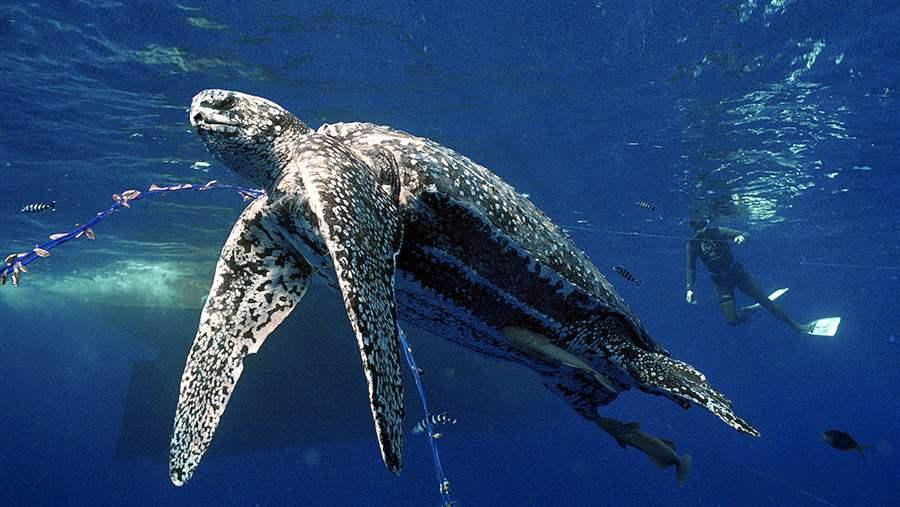New Technique Traces Link between Fishing and Sea Turtles
 © Guy Marcovaldi / Marine Photo Bank
© Guy Marcovaldi / Marine Photo BankA leatherback sea turtle caught by a longline fishing vessel near Brazil. Bycatch may pose a threat to this endangered ocean species.
Longline fishing vessels in the Gulf of Mexico are catching a disproportionate number of leatherback sea turtles from Costa Rica, potentially harming a population that is not faring as well as others, according to a new study. The finding, based on a DNA technique that traces turtles to the beaches where they were born, could help improve recovery of this and other endangered species.
“This does not tell us whether fishing is hurting the Costa Rica population, but it points the way to a better assessment of the impact of fishing, and of the other threats sea turtles face,” said Kelly Stewart, lead author and biologist at The Ocean Foundation. Her co-authors are at the National Oceanic and Atmospheric Administration’s fisheries service (NOAA Fisheries). The research was supported by the Lenfest Ocean Program.
Leatherbacks, like most of the six other species of sea turtle, declined dramatically in the late 20th century. The main causes are thought to be excessive egg harvest on beaches and accidental catches in fishing gear. Their numbers are now on a marked upswing in the Atlantic Ocean, except for the Atlantic Costa Rican leatherback population. It is not clear whether fishing is one of the reasons for this lack of recovery; in fact, most turtles caught in the fishery survive.
To better understand the impact of longline fishing gear, Stewart and her colleagues used a set of DNA markers called microsatellites that have been developed at the NOAA Fisheries’ Sea Turtle Genetics Laboratory. They tested DNA from skin samples of more than 400 turtles caught between 2002 and 2012 in the Atlantic U.S. pelagic longline fishery, which targets mainly tuna and swordfish and ranges from the Gulf of Mexico to Canada. This methodology allowed them to match each turtle to a distinct population, based on a previous study of DNA taken from turtles on nesting beaches.
The study found that a disproportionate share of turtles caught in the Gulf of Mexico were from Costa Rica: 43, much greater than the 15 that would be expected if turtles were distributed randomly in their foraging grounds throughout the Atlantic.
“This approach, using DNA to assign turtles caught at sea to home nesting beaches, is a significant milestone that we have been working toward for over a decade,” said Peter Dutton, a study co-author and the Marine Turtle Genetics Program Lead at NOAA’s Southwest Fisheries Science Center. “It gives us the ability to better understand the threats that these turtles face on long migrations between nesting beaches and foraging areas.”
“The next step is to figure out what other threats the Costa Rica population may be facing, so that improved recovery goals may be made,” Stewart says. “Looking beyond leatherbacks, this technique is ready to be adapted to other turtle species and perhaps to marine mammals or sharks—any marine species that has distinct populations facing threats that differ across habitats.”

